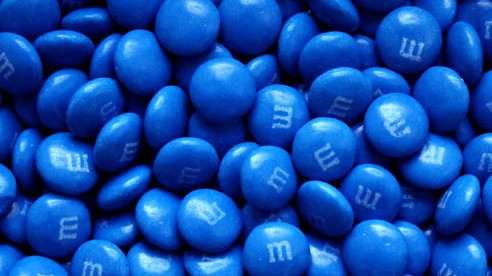The Weekender, April 28, 2017

1) “Torching the Modern-Day Library of Alexandria ” (The Atlantic, 25 minutes, April 2017). Imagine a seemingly infinite library — digital — of books. Every book possible. It almost happened — almost. The quote below is a patchwork from the piece, but it summarizes the problem very well.
Google’s secret effort to scan every book in the world, codenamed “Project Ocean,” began in earnest in 2002 when Larry Page and Marissa Mayer sat down in the office together with a 300-page book and a metronome. Page wanted to know how long it would take to scan more than a hundred-million books, so he started with one that was lying around. Using the metronome to keep a steady pace, he and Mayer paged through the book cover-to-cover. It took them 40 minutes.
[ . . . ]
By 2004, Google had started scanning. In just over a decade, after making deals with Michigan, Harvard, Stanford, Oxford, the New York Public Library, and dozens of other library systems, the company, outpacing Page’s prediction, had scanned about 25 million books. It cost them an estimated $400 million. It was a feat not just of technology but of logistics.
[ . . . ]In August 2010, Google put out a blog post announcing that there were 129,864,880 books in the world. The company said they were going to scan them all.
Of course, it didn’t quite turn out that way. This particular moonshot fell about a hundred-million books short of the moon. What happened was complicated but how it started was simple: Google did that thing where you ask for forgiveness rather than permission, and forgiveness was not forthcoming. Upon hearing that Google was taking millions of books out of libraries, scanning them, and returning them as if nothing had happened, authors and publishers filed suit against the company, alleging, as the authors put it simply in their initial complaint, “massive copyright infringement.”
2) Sponsored: Today’s Now I Know is sponsored by Make Your Point, a great free, daily vocabulary email. Did you know that the typical English-speaking adult knows between 20,000 and 35,000 words–and yet there are over 171,000 English words in current use? If you’d like to know more words and use them better, subscribe to Make Your Point. (It’s free.)
3) The Now I Know Week in Review:
- Monday: The Communist Stop Light — China’s brief attempt to change how traffic lights work (with predictably bad results)
- Tuesday: The Time Travel Trap — Why you can, kind of, buy a time travel device on an online auto parts dealer’s website.
- Wednesday: An Astronaut’s Most Important Fan — It’s tricky to sleep in space, after all.
- Thursday: The Great Mustard Pickle Panic of 2016 — A run on condiments in Newfoundland.
And a bonus item: Extreme Tag — probably the best game of Tag ever played.
4) “Brand New Hue: The Quest to Make a Blue M&M” (New York Times, 19 minutes, October 2016). Making a blue candy is harder than you think.
Blue is a rarity among plants and animals. When it does occur in nature, it often isn’t truly blue, but rather a trick of diffraction, or the scattering of light, which is the case for bird feathers, sky, ice, water and iridescent butterfly wings. A blueberry is actually more red than blue when you mash it. “Unfortunately, you can’t just grind up a peacock feather,” said Robbins, a petite woman with a Ph.D. in organic chemistry and the empathic, wide-set blue eyes of a small-town bartender, with what sounded like genuine regret.
[ . . . ]
In 2013, the Food and Drug Administration approved Mars’s petition to use the microscopic algae spirulina to make the first natural blue dye approved for use in the United States. As a result, any food manufacturer in the country can legally use spirulina as a colorant. Mars spent years researching spirulina’s safety; in order to overhaul 1,700 or so recipes and update its global manufacturing capabilities, the company desperately needs a substitute for synthetic Blue No. 1, as does the rest of the industry. But right now, there isn’t nearly enough spirulina dye to go around — and in any case, sometimes it doesn’t yield just the right blue, or the color degrades and comes out blotchy, or it tastes odd. So researchers are still looking everywhere for other natural blue pigments.
WeekenderAdUnits
5) “Who Owns This Car? The Strange Battle Over U.S. Claims in Cuba” (Slate, 24 minutes, November 2015).
Starting in 1964, the U.S. Foreign Claims Settlement Commission created a registry to record the assets yoinked from Americans who’d been in Cuba. [ . . .] After Castro took power, 5,913 individual Cuba claims were certified. They were assessed at a total value of $1.9 billion at the time they were seized.
[ . . . ]
All these claims, great and small, have lain around for decades—gathering dust and (as stipulated by the FCSC) 6-percent annual, noncompounding interest. They’ve grown to a collective worth of just about $8 billion. In theory, the U.S. State Department is authorized to broker a deal with Cuba that will settle all the claims at once. The claimants can also, experts seem to agree, attempt on their own to reach individual agreements with the Cuban government. But to date, as far as anyone can tell, not a single claim has been settled.
6) “Blitzen Trappers” (Buzzfeed, 21 minutes, December 2015). The sub-head: “Long before Santa first hitched Rudolph to his sleigh, reindeer served a much less whimsical role: dinner. Siberia’s native herders have worked tirelessly to keep alive their centuries-old tradition of reindeer husbandry. But don’t ask them how long it will last.”
Have a great weekend!

